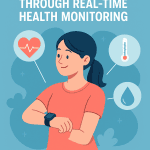This article is for informational purposes only and is not a substitute for professional medical advice. Always consult your healthcare provider for personalized guidance.
Introduction to Continuous Glucose Monitors
Managing diabetes can be a complex journey, often requiring constant attention to blood sugar levels. Fortunately, continuous glucose monitors (CGMs) have emerged as a game-changing tool in this regard. But what exactly are they, and how do they work?
What is a Continuous Glucose Monitor?
A CGM is a device that tracks glucose levels in real-time throughout the day and night. Instead of frequent finger pricks, CGMs provide users with continuous feedback, allowing for a more proactive approach to diabetes management.
The Benefits of Using CGMs
One of the standout features of CGMs is their ability to alert users of high or low glucose levels, which can be lifesaving. By providing insights into patterns and trends, CGMs empower individuals to make informed decisions about their diet, exercise, and medication.
Improved Quality of Life
Many users report that CGMs significantly reduce the daily burden of managing diabetes. Imagine being able to check your glucose levels without a needle prick! This convenience can lead to better adherence to treatment plans and ultimately, improved health outcomes.
Integration with Other Technologies
Modern CGMs can integrate with smartphones and insulin pumps, creating a seamless experience for users. This integration allows for easy sharing of data with healthcare providers, fostering better communication and personalized care plans.
Challenges and Considerations
While CGMs offer numerous advantages, they are not without their challenges. Some users may experience skin irritation from the sensor. Additionally, the cost can be a barrier for some, as not all insurance plans cover these devices.
Conclusion
The advancements in diabetes management through continuous glucose monitors represent a significant step forward in patient care. As technology continues to evolve, we can only hope that these tools become more accessible to everyone living with diabetes.
Key Takeaways
- CGMs provide real-time glucose monitoring, eliminating the need for frequent finger pricks.
- They offer alerts for high and low glucose levels, enhancing user safety.
- Integration with smartphones and insulin pumps allows for streamlined management.
- Users often report improved quality of life and better adherence to treatment plans.
- Challenges include potential skin irritation and varying insurance coverage.
References
- American Diabetes Association. (2023). Standards of Medical Care in Diabetes.
- Centers for Disease Control and Prevention. (2022). National Diabetes Statistics Report.
- UpToDate. (2023). Continuous Glucose Monitoring in Diabetes: Overview.
- National Institutes of Health. (2023). Diabetes and Continuous Glucose Monitoring.
- World Health Organization. (2023). Diabetes: Key Facts.







Post a comment